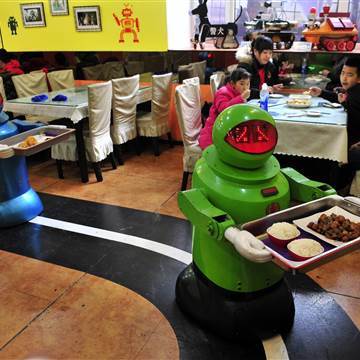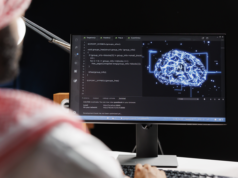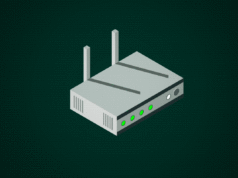Clamshell grills are making burger flipping obsolete at McDonald’s, Johnny Rockets and other burger chains. Digital kiosks, tabletop tablets and mobile phones are taking orders at eateries like Panera, Chili’s Grill & Bar and Domino’s. And at Silicon Valley start-up Zume, robots are being programmed to take over pizza assembly.
Such labor-saving devices have been held out as counterweights to efforts to raise the wages of the lowest paid workers in the United States. But the early evidence suggests robots and other forms of automation are merely reshaping the work of people in food service. They are not — as they have in banks, on factory floors and in other sectors — replacing them.


In spite of improvements in technology, minimum wage hikes between 2000 and 2008 caused little immediate displacement of workers by technology, especially in kitchens, according to a study by economists at the Federal Reserve Bank of Chicago and DePaul University.
There were slightly more workers per restaurant in 2015 than in 2001, according to data compiled for Reuters by the National Restaurant Association, which opposes minimum wage hikes.
And the U.S. Bureau of Labor Statistics has projected leisure industry jobs, a broad category that includes restaurants, will grow at 0.6 percent annually, keeping pace with the national average through 2024.
Automation in the restaurant industry looms large in the heated campaign to raise entry level pay to $15 an hour, more than double what U.S. federal law now mandates.
Restaurants employ more low-wage workers than any other industry, and their operators are among the most vocal opponents of minimum wage hikes. Several executives have said major pay hikes would force the fast-food industry to ramp up automation, an investment that would cost thousands of jobs.
“The numbers just don’t work for raising the minimum wage this dramatically,” said Andrew Puzder, CEO of Carl’s Jr parent CKE Restaurants. “It will kill jobs.”
The Robot Revolution is Years Away
Robotics researchers, restaurant executives, industrial engineers, consultants and economists said, however, automation in the restaurant and fast-food sectors is not as simple as installing automatic tellers in banks or employing robots to assemble cars.
While any rise in the minimum wage puts pressure on restaurant operators, they said a robot revolution in the $783 billion U.S. restaurant industry is still years away.
“It’s not like we’re at the precipice of a revolution where the minimum wage goes up, and all these jobs disappear,” said Ken Goldberg, a professor of engineering and director of the People and Robots Initiative at the University of California, Berkeley.


Many kitchen jobs still are too complex for robots, which can’t multitask and don’t necessarily work safely with humans in cramped spaces, experts said. While robots excel at complex calculations and precise, repetitive tasks, they have difficulty doing some things that are easily mastered by small children — such as stacking blocks and sensing objects in space.
Did Not Compute: Burger King Already Tried Robot Workers
Burger King attempted a potentially sweeping automation overhaul in the 1980s. It designed machines to take orders; broil, assemble and package hamburgers; cook and portion French fries; and serve drinks. But new management came in and shelved the project.
It’s not clear why. Among the questions at the time was whether the machines would be a “maintenance nightmare,” which can be costly and, when they break down, bring operations to a screeching halt, alienating customers, restaurant operators said.
In other industries, such as car plants, breakdowns can be costly, but delays do not immediately frustrate consumers, in the way a late pizza angers a hungry family.
Thomas Willis, an industrial engineer who was part of Burger King’s project, said many restaurant operators still don’t have the appetite for the kind of investment risks such efforts require.
“The fear of walking away from what works already is huge,” he said. But Silicon Valley is nurturing an appetite for risk and experimentation in the kitchen.
An Appetite for Risk
Momentum Machines has built a device to make gourmet burgers “with no human interaction” and city permit data show it plans to open a restaurant in San Francisco.
Zume Pizza, a Silicon Valley delivery start-up that has raised $5.7 million in venture capital, said robots will be building and baking pies by themselves within six months.
Already, a robot named Pepe squirts tomato sauce onto the dough, and it is spread by another called Marta. After people add cheese and toppings, robot Bruno gently moves the pizza from a conveyor belt to an oven.
Co-founder Julia Collins said one of Zume’s biggest challenges is maintaining the perseverance it takes to overcome technological difficulties. It took months, for instance, to get Marta to spread the tomato sauce with enough precision to keep it from splashing it off the pizza.









